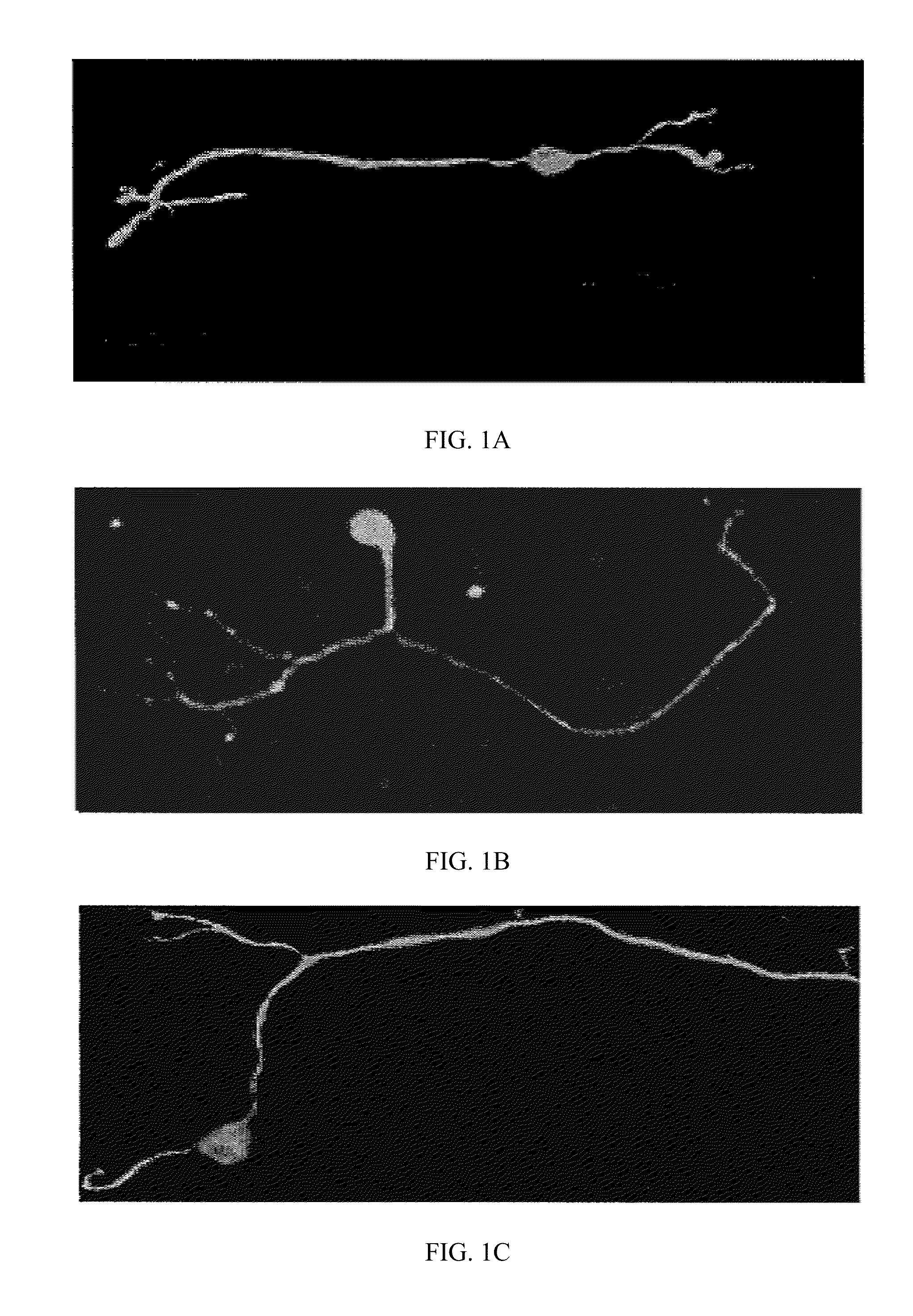Use of nicotinamide riboside to treat hearing loss
a technology of nicotinamide riboside and nicotinamide, which is applied in the direction of drug compositions, metabolism disorders, instruments, etc., can solve the problems of permanent neurite degeneration, synaptic disruption and neurite retraction, hearing loss worldwide, etc., to prevent or treat hearing loss in the mammal
- Summary
- Abstract
- Description
- Claims
- Application Information
AI Technical Summary
Benefits of technology
Problems solved by technology
Method used
Image
Examples
example 1
[0045]This example demonstrates that spiral ganglia neuritis possess the NAD-regulated signaling pathway that has previously been shown to prevent axonal degeneration.
[0046]Axonal degeneration in a variety of neurons can be blocked by treatment with millimolar concentrations of NAD+ (Avery, M. A., et al., Current Biology, CB 22, 596-600 (2012)). To determine if spiral ganglia neurites also possessed this NAD-sensitive pathway, axonal degeneration was elicited using rotenone, which is a mitochondrial complex I inhibitor that has previously been shown to induce axonal degeneration in axons of dorsal root ganglia neurons (Press, C. et al., J. Neuroscience, 28, 4861-4871 (2008)). Treatment of P5 DIV3 rat spiral ganglia neurons with 10 μM rotenone resulted in neurite degeneration in as early as 2 hr, as measured by the presence of neurite blebbing. This effect was blocked by simultaneous treatment of neurons with 10 mM NAD+. Representative NF-200 stains of untreated neurites (control), n...
example 2
[0047]This example demonstrates that genetic enhancement of endogenous NAD+ biosynthetic pathways reduces noise-induced hearing loss. The Wallerian degeneration slow (WldS) mouse expresses a triplicate repeat of a gene fusion of the NAD biosynthetic enzyme Nicotinamide mononucleotide adenylyl transferase 1 and Ube4a (Coleman, M. P, et al., Proc. Natl. Acad. Sci. USA, 95, 9985-9990 (1998)). WldS is highly expressed in neurons, and its expression markedly delays degeneration of the distal axonal fragment following axonal transaction (Araki, T. et al., Science, 305, 1010-1013 (2004)). WldS expression also mitigates disease phenotypes of mice that are susceptible to various neurodegenerative diseases (Samsam, M., et al., J. Neuroscience, 23, 2833-2839 (2003); Kaneko, S. et al., J. Neuroscience, 26, 9794-9804 (2006); Sajadi, A. et al., Current Biology, CB 14, 326-330 (2004)). WldS acts in axons to maintain axonal NAD biosynthesis after axonal injuries (Wang, J, et al., J. Cell Biol. 170,...
example 3
[0051]This example demonstrates that a pharmacologic route for increasing NAD+ levels using nicotinamide riboside as active agent results in protection from hearing loss.
[0052]Nicotinamide riboside (NR) is a well-tolerated precursor of NAD+. In these experiments, NR was administered by intraperitoneal injection twice daily at 1000 mg / kg, a dose which increases tissue NAD levels by 50%, either for 5 days prior to noise exposure and 14 days after noise exposure (NR Before+ After), 5 days prior to noise exposure (NR Before), or 14 days after noise exposure (NR After). Compared to vehicle-treated mice, NR-treated mice exhibited negligible transient threshold shifts at 24 hours at 8000 Hz and 16,000 Hz (6 and 8 dB respectively), and a reduced threshold shift at 32,000 Hz (16 dB). The hearing loss at 8000 Hz, 6,000 Hz, and 32,000 Hz is set forth in the Table and is depicted graphically in FIGS. 4A-4C, respectively. Mice were similarly protected from permanent hearing loss at all 3 frequen...
PUM
| Property | Measurement | Unit |
|---|---|---|
| Exposure limit | aaaaa | aaaaa |
| Toxicity | aaaaa | aaaaa |
Abstract
Description
Claims
Application Information
 Login to View More
Login to View More - R&D
- Intellectual Property
- Life Sciences
- Materials
- Tech Scout
- Unparalleled Data Quality
- Higher Quality Content
- 60% Fewer Hallucinations
Browse by: Latest US Patents, China's latest patents, Technical Efficacy Thesaurus, Application Domain, Technology Topic, Popular Technical Reports.
© 2025 PatSnap. All rights reserved.Legal|Privacy policy|Modern Slavery Act Transparency Statement|Sitemap|About US| Contact US: help@patsnap.com



